GPCR/G protein

All GPCRs share a common seven trans-membrane structure. GPCRs are associated with heterotrimeric G-proteins which are GTP-binding proteins made of alpha, beta, and gamma subunits. When a ligand binds to GPCR, it activates the attached G-protein, the GDP is replaced with GTP. The activated G-protein then dissociates into an alpha and a beta-gamma complex which activates downstream signaling pathways. These intracellular signaling pathways include cAMP/PKA, calcium/NFAT, phospholipase C, protein tyrosine kinases, MAP kinases, PI-3-kinase, nitric oxide/cGMP, Rho, and JAK/STAT.
GPCRs are one of the most important therapeutic targets for various diseases, over 30% of all modern medicinal drugs target this family. Aberrant GPCR functions are involved in pathological conditions such as neurological, immunological and hormonal disorders. A large number of GPCRs have been identified, but whose ligands are not known, are classified as orphan receptors.
-
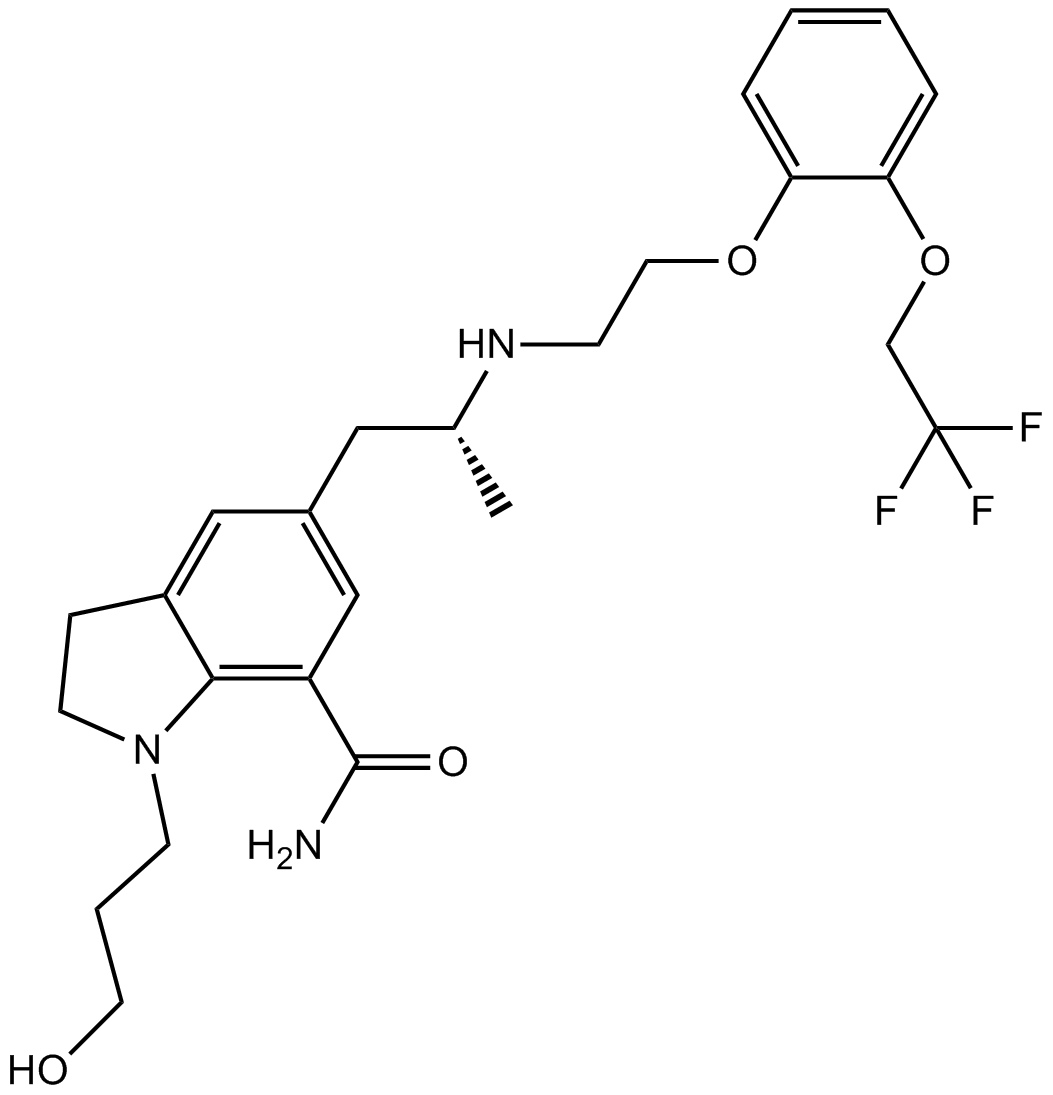 A8521 SilodosinSummary: α1-adrenoceptor antagonist
A8521 SilodosinSummary: α1-adrenoceptor antagonist -
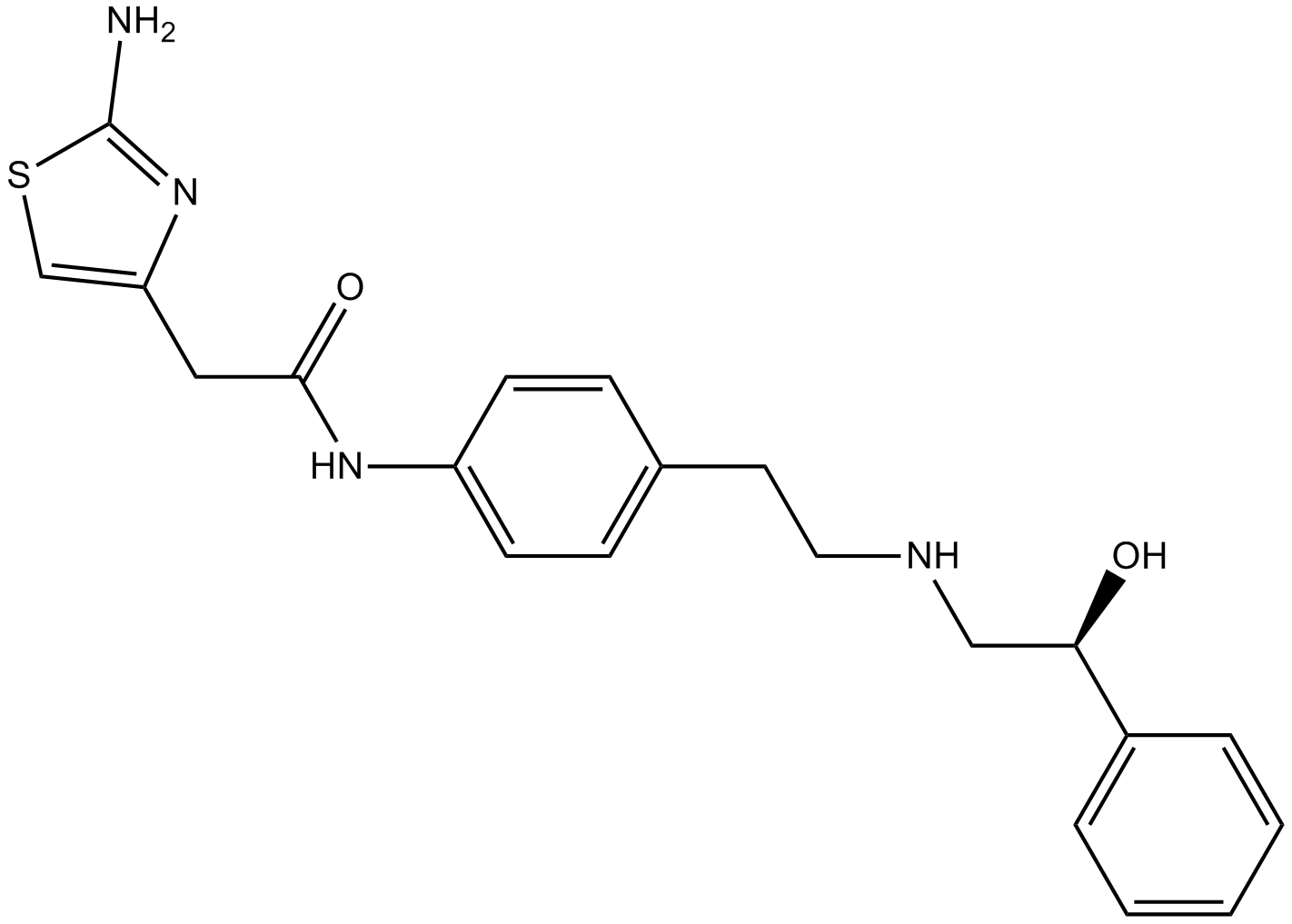 A8474 Mirabegron (YM178)Target: adrenoceptorSummary: Selective β3-adrenoceptor agonist
A8474 Mirabegron (YM178)Target: adrenoceptorSummary: Selective β3-adrenoceptor agonist -
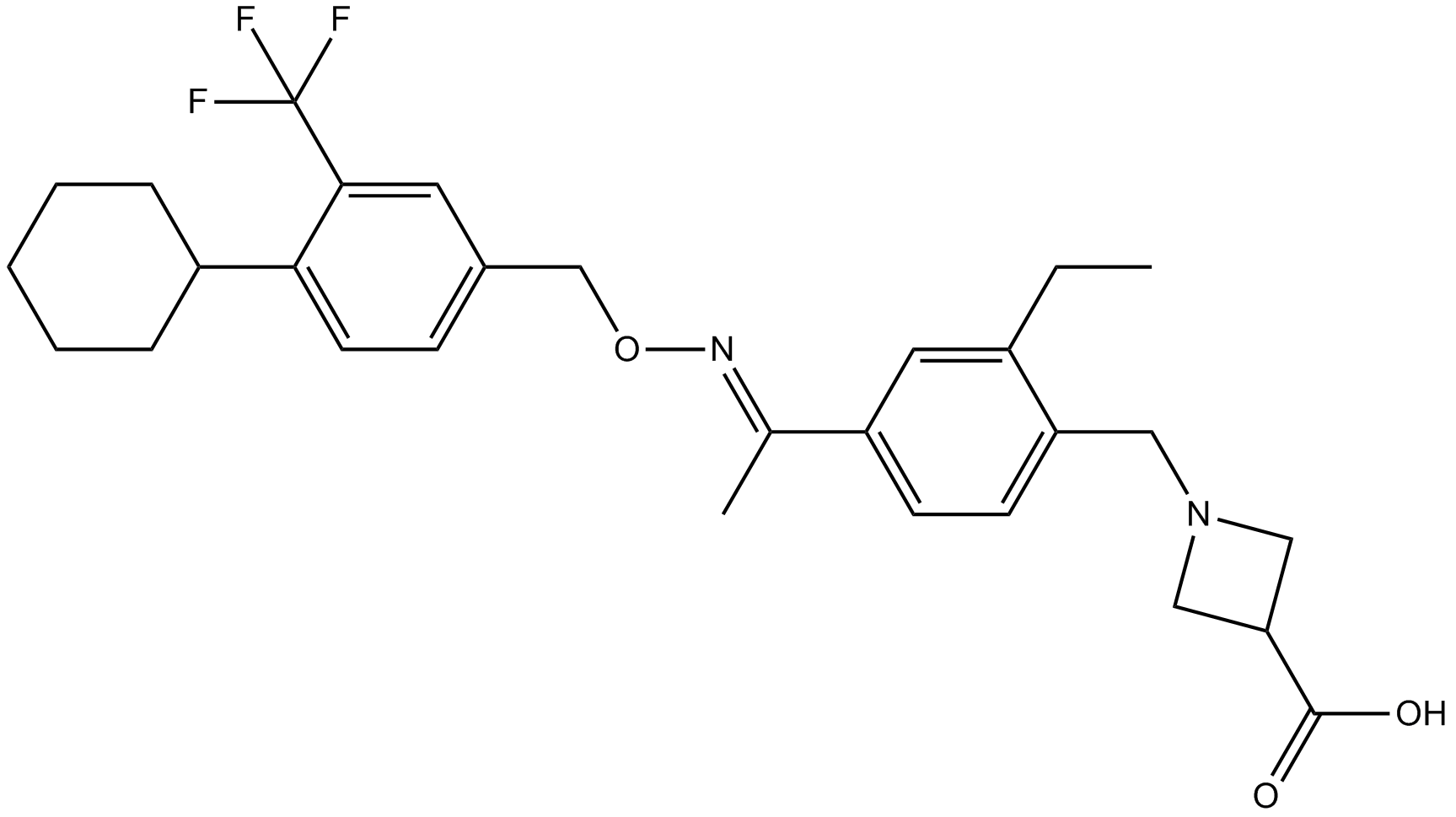 B3225 BAF312 (Siponimod)1 CitationTarget: S1P receptorsSummary: S1P agonist,potent and selective
B3225 BAF312 (Siponimod)1 CitationTarget: S1P receptorsSummary: S1P agonist,potent and selective -
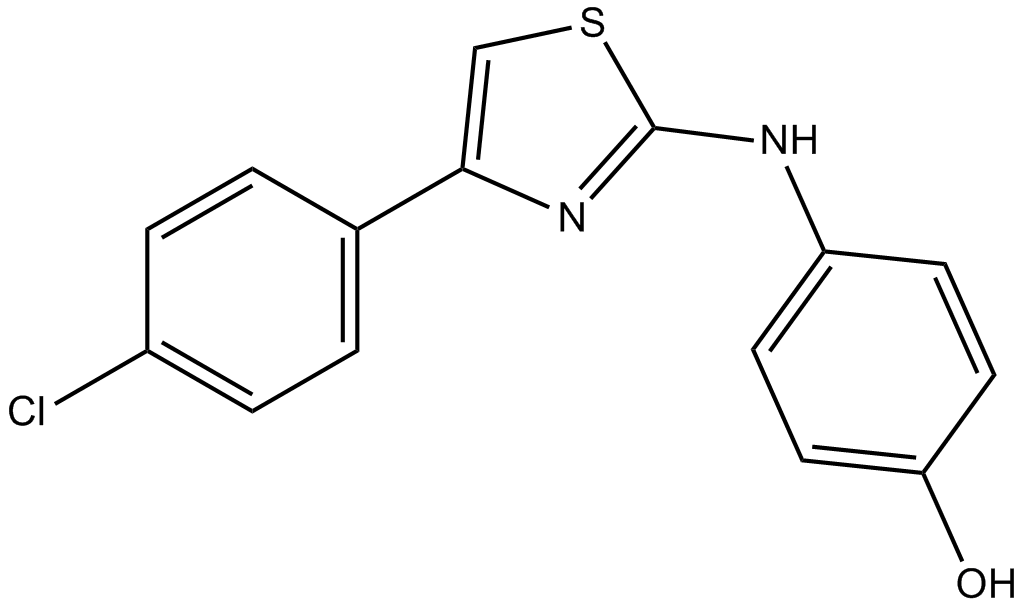 B2226 SKI IITarget: Sphingosine kinases (SphKs)Summary: Sphingosine kinase(SK) inhibitor
B2226 SKI IITarget: Sphingosine kinases (SphKs)Summary: Sphingosine kinase(SK) inhibitor -
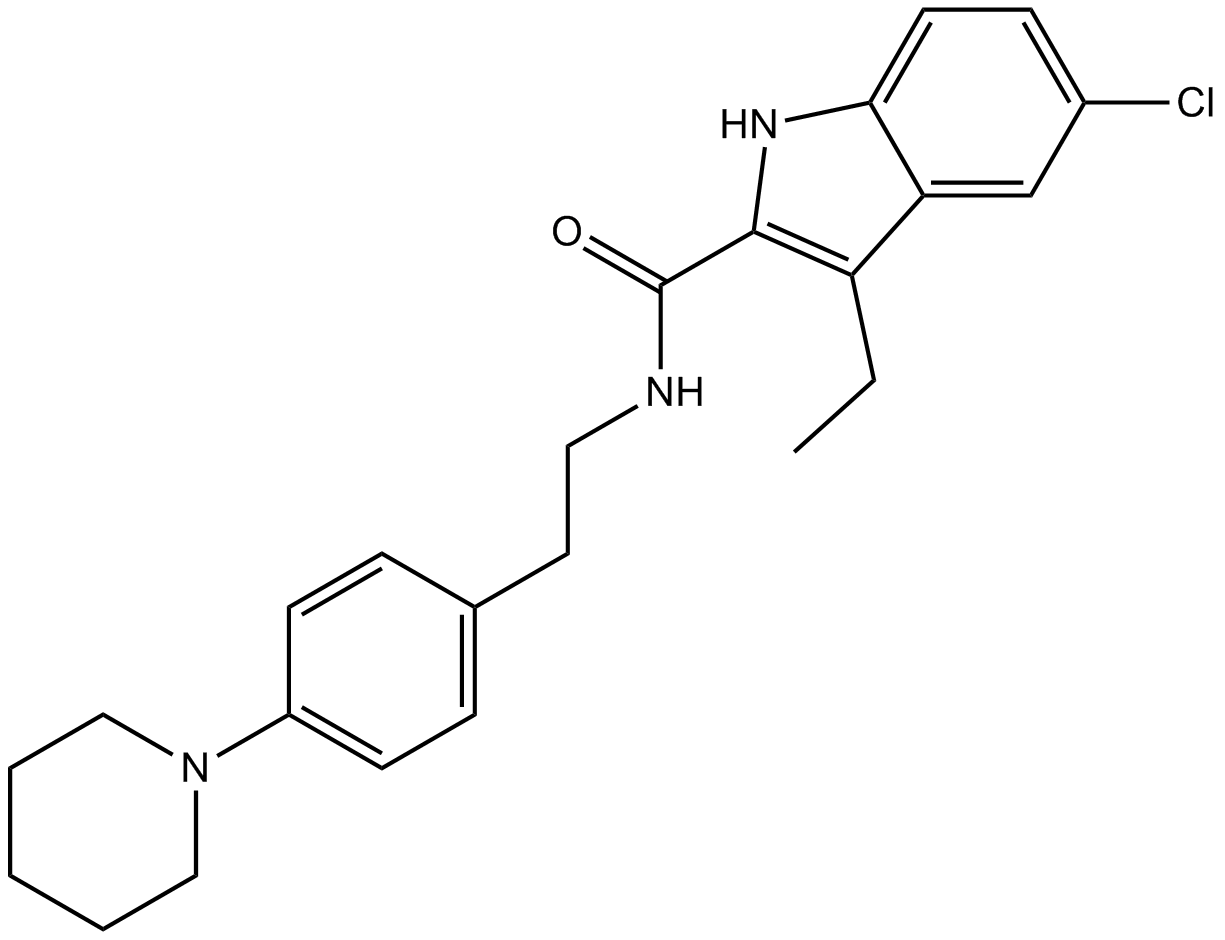 B1426 Org 27569Target: CB1 ReceptorsSummary: Cannabinoid CB1 receptor allosteric modulator
B1426 Org 27569Target: CB1 ReceptorsSummary: Cannabinoid CB1 receptor allosteric modulator -
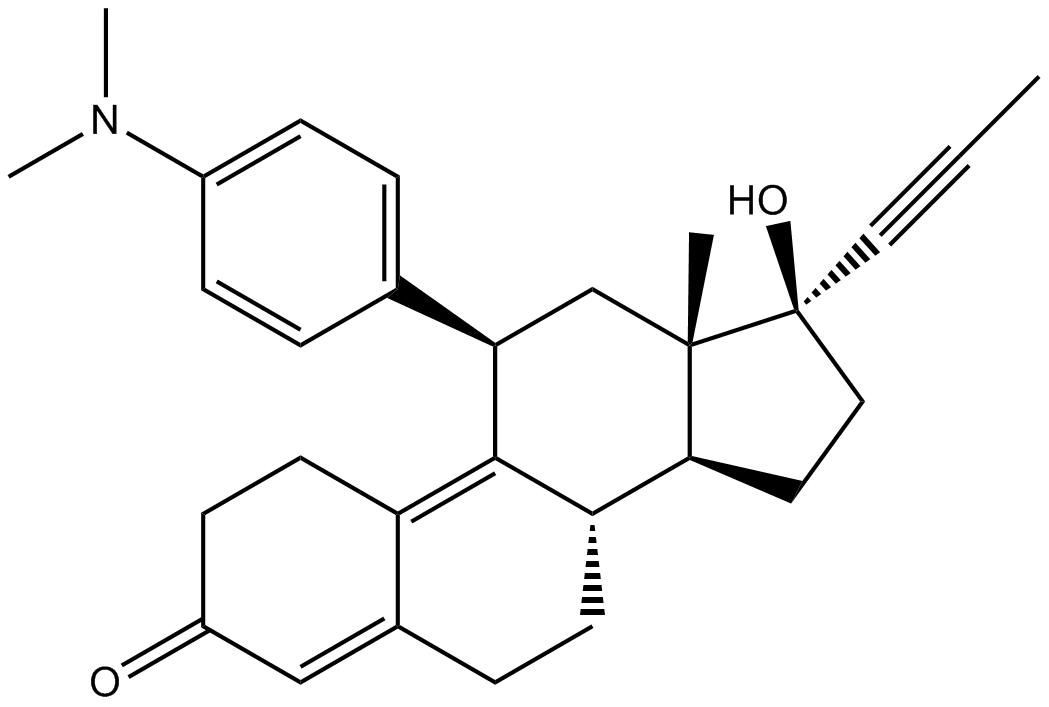 B1511 Mifepristone3 CitationTarget: Progesterone Receptors|Glucocorticoid ReceptorsSummary: Progesterone receptor antagonist
B1511 Mifepristone3 CitationTarget: Progesterone Receptors|Glucocorticoid ReceptorsSummary: Progesterone receptor antagonist -
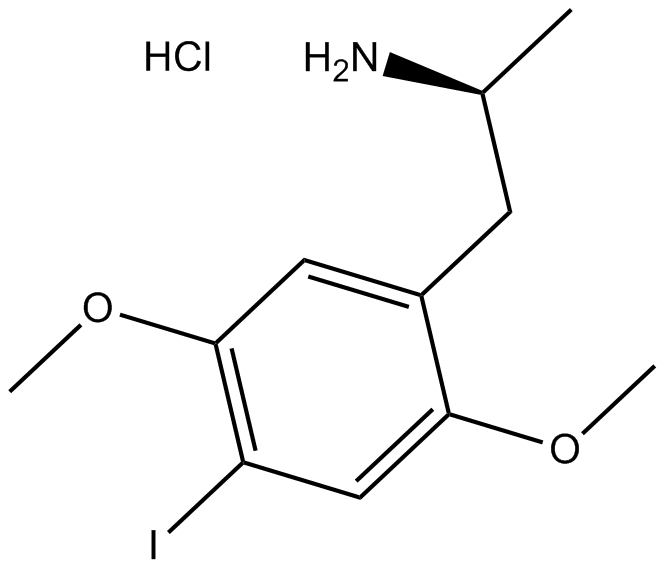 B5321 DOI hydrochlorideTarget: 5-HT2 ReceptorsSummary: A brain-permeable 5-HT2A/5-HT2C receptor agonist
B5321 DOI hydrochlorideTarget: 5-HT2 ReceptorsSummary: A brain-permeable 5-HT2A/5-HT2C receptor agonist -
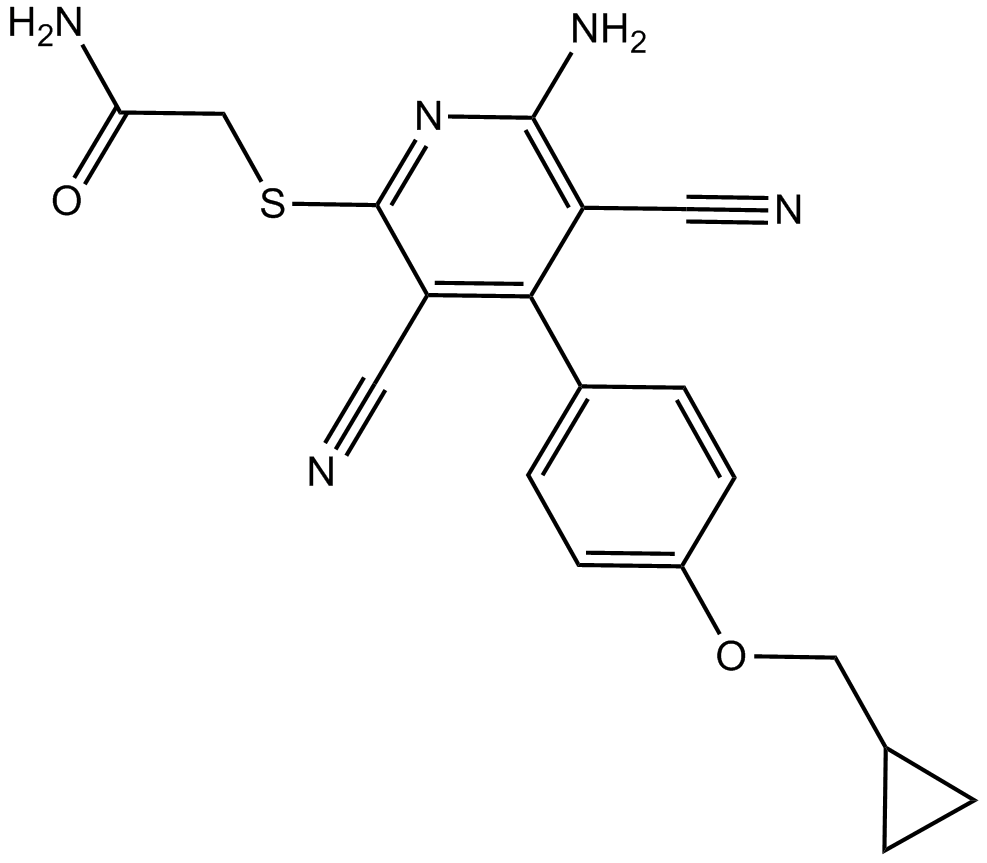 B5612 BAY 60-6583Target: Adenosine A2B ReceptorsSummary: Potent A2B receptor agonist
B5612 BAY 60-6583Target: Adenosine A2B ReceptorsSummary: Potent A2B receptor agonist -
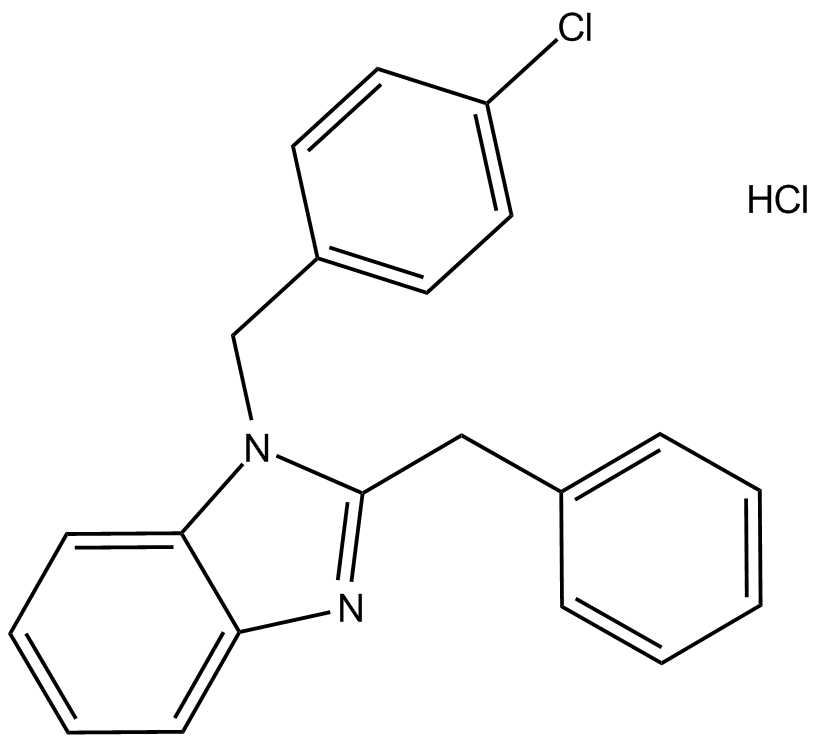 B5705 Q94 hydrochlorideTarget: PAR receptorSummary: PAR1 negative allosteric modulator
B5705 Q94 hydrochlorideTarget: PAR receptorSummary: PAR1 negative allosteric modulator -
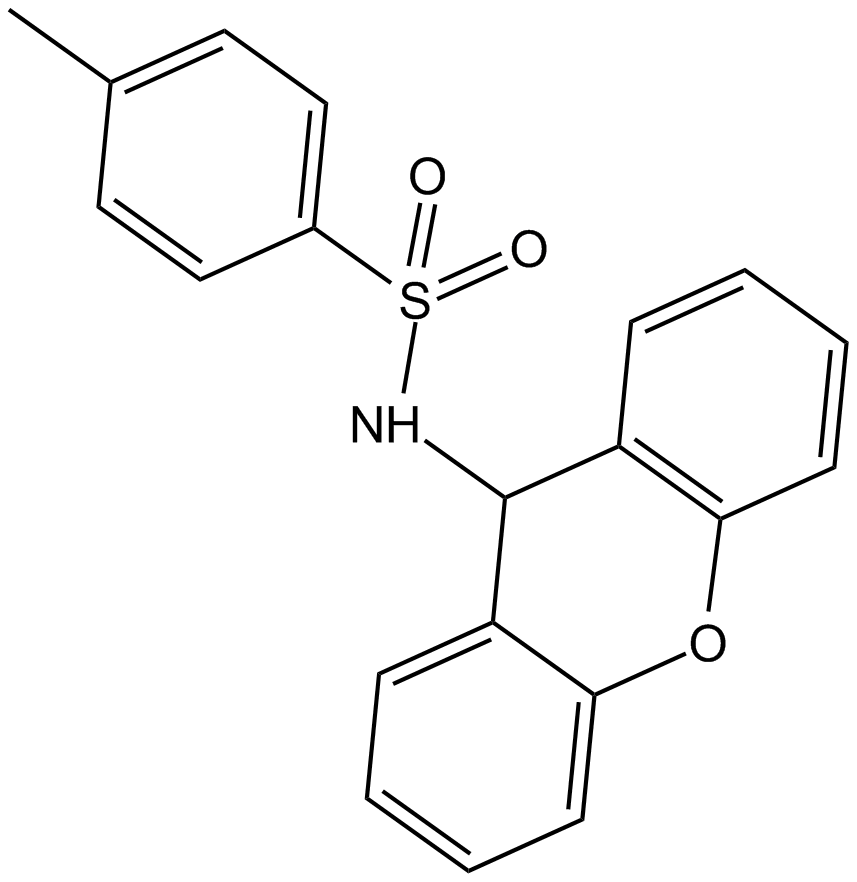 B7792 AH 76141 CitationTarget: Free Fatty Acid ReceptorsSummary: FFA4/GPR120 antagonist
B7792 AH 76141 CitationTarget: Free Fatty Acid ReceptorsSummary: FFA4/GPR120 antagonist

